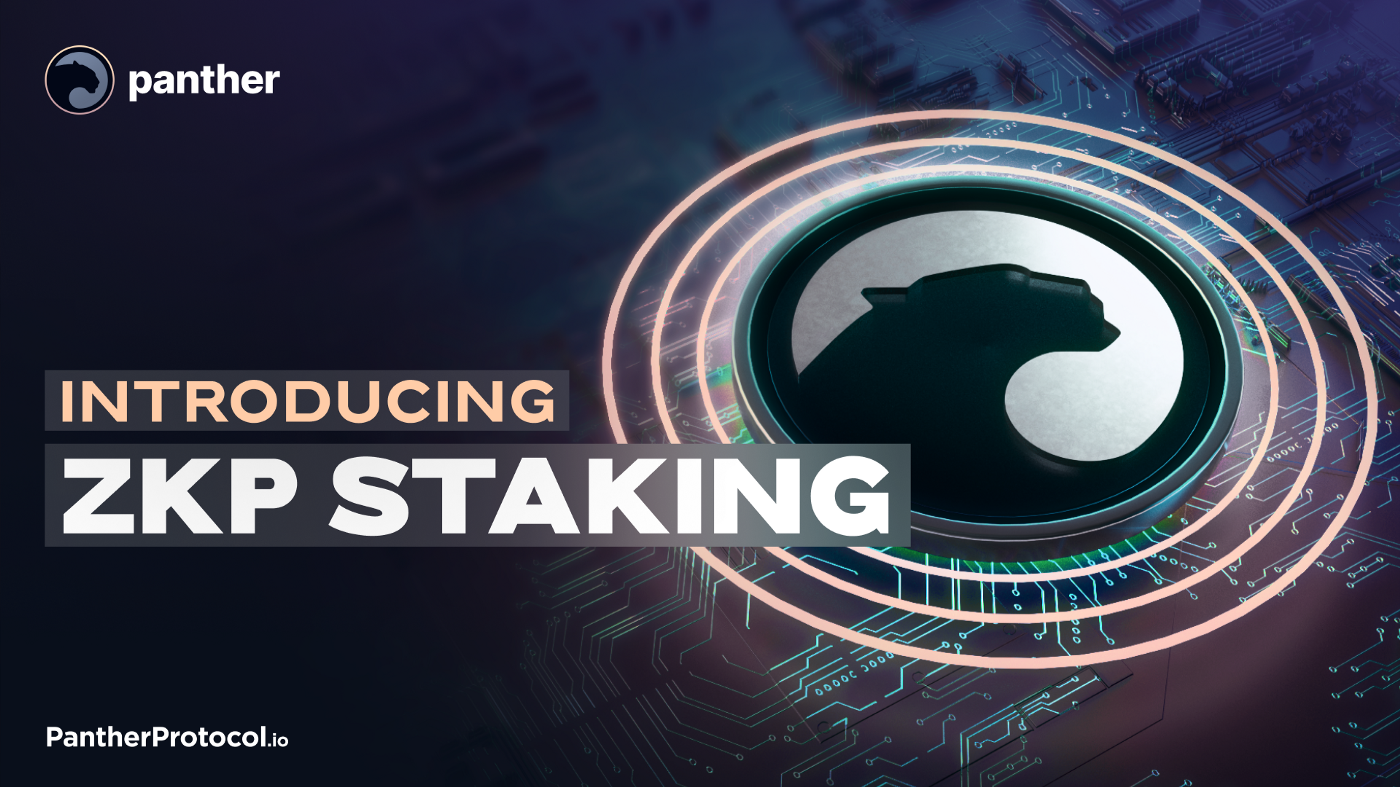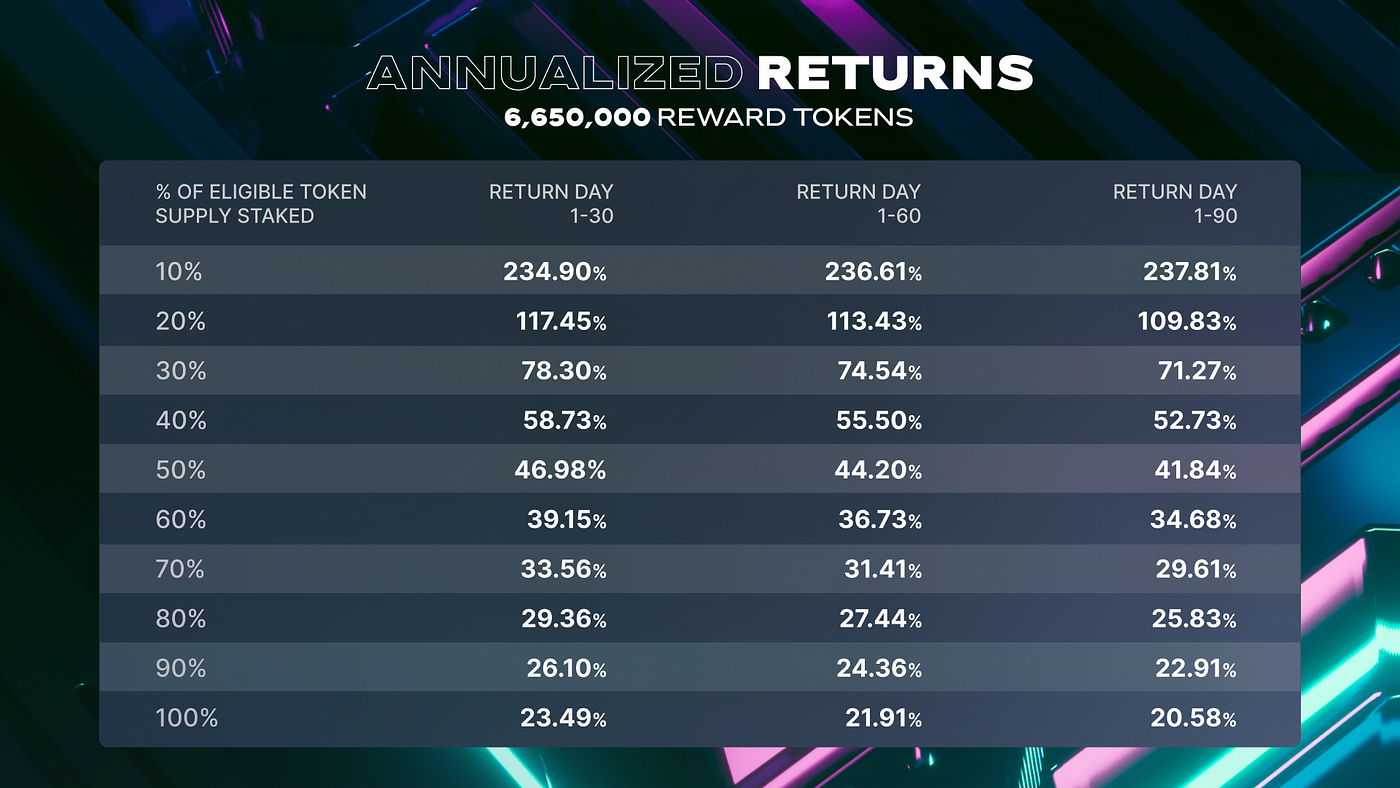$ZKP Staking is now live! Here’s all you need to know.

Table of Contents:
Dear Panthers,
Our Token Generation Event (TGE) is now closer to being a reality than ever. You have all successfully voted to launch the Panther Protocol in a private, decentralized manner that will make blockchain history books.
However thrilling it is to witness such a feature, and regardless of how tempted we are to pop open a bottle of champagne to celebrate, it is now necessary for us to get back to work… while simultaneously unveiling the next piece of our launch engine, that is.
Introducing $ZKP Staking
As you all know, thanks to the success of LaunchDAO, our TGE is set to happen this January 31st.
This means that starting on this date, a number of $ZKP tokens will hit the market: The tokens sold at our Public and Private Sales will start their vesting process, and rewards from LaunchDAO will be allocated to their owners.
Of course, having tokens hitting the market without any direct use case for them would be detrimental to the health of our project and against our vision to incentivize users to hold and use these tokens. We want to create a launching scenario in which users have a reason to hold tokens that is productive for the project and that helps reduce selling pressure. Let us also not forget that $ZKP is a governance token, so its use needs to be directly related to this function.
From Wednesday 2nd February 00:00:00 UTC, holders of unlocked $ZKP will be able to stake $ZKP to:
- Earn rewards in $ZKP. The protocol will award 6.65 million $ZKP (the original planned 5 million $ZKP pool + the extra 33% selected by protocol voters) to stakers during the first three months after its release.
- Govern the project. Through staking, users will gain the right to vote on governance proposals within the Panther DAO.
As the protocol progresses and we develop more functions, staking will also serve to strengthen the protocol’s privacy. Since this will only happen at a later phase, let us look at the three phases of our Staking Plan: Traditional Staking, Experimental Staking, and Private Staking.
Staking Plan, Phase 1: Traditional Staking

As stated above, Panther Protocol will be launching a $ZKP Governance Staking program right after TGE. This will allow holders of $ZKP to stake and earn high returns on their holdings. Rewards will come from the 6.65 million $ZKP pool mentioned above and will be distributed at a varying rate depending on the number of users staking and their staked amount. Each user will earn a proportion of the new rewards added to the Rewards Pool ongoingly, divided based on their pool share.
Staking $ZKP also enables stakers to participate in Panther’s Governance and Voting on proposals from Wednesday 2nd February 00:00:00 UTC. This will be available to all holders of unlocked tokens, i.e. investors who have a percentage or all of their tokens unlocked at TGE. This realizes our purpose of having a fully decentralized project after the hard work that went into making LaunchDAO a success.
APYs and Rewards
The below table illustrates the annualized yields (APYs) users can expect from staking their tokens during Phase 1. The rate a user gets depends on the percentage of eligible tokens that are staked by the community as a whole. Users get shares of the total reward pool in proportion to their contribution to it.

For example, if 20% of the total available supply was staked by users, within the first 30 days, a user that staked could expect to receive an annualized rate of 117.45%. This number progressively lowers as more tokens hit the market, making the APY by the end of Phase 1 be 109.83% should all variables remain constant.
It’s important to keep in mind that variables such as the percentage staked and the tokens available in the market are dynamic, so therefore the above are estimates given precise scenarios.
Staking Plan, Phase 2: Experimental Staking
After TGE and, pending the voting and approval of the Panther DAO, Experimental Staking will be deployed, opening a transition phase.

The idea behind Experimental Staking is to start utilizing key technical components of the main protocol incrementally. Whilst the team has worked hard to implement and test these smart contracts and zero-knowledge arithmetic circuits in a robust fashion, and is very confident that they will perform as expected, we acknowledge that using any new technology inevitably carries a degree of risk.
Therefore, during the transition phase, users can choose whether to switch to Experimental Staking (albeit, this will trigger transaction costs). They will receive higher $ZKP rewards in return for helping test these parts of the main protocol in advance of their full launch.
During this phase, creation of new stakes will require a choice between this mode or Classic. Experimental Staking will be a temporary precursor to Private Staking.
At the end of the Experimental Staking, all the $ZKP rewarded for staking will be moved to and staked on a Multi-Asset Shielded Pool on Polygon, where it will become $zZKP (private $ZKP). In addition to $zZKP, users will also receive Panther Reward Points, PRP, which are non-transferable points associated with their private wallet address. Panther Reward Points will eventually allow users to privately redeem PRPs for $zZKP. PRPs are expected to act as a privacy price discovery mechanism, a topic we’ll dive into in a separate piece.
Staking Plan, Phase 3: Private Staking
Private Staking is the final phase of staking, at least for the time being. By the time Panther transitions to Private Staking capabilities, the technology behind Experimental Staking should have had enough time to be proven in a real-world environment. Therefore, the DAO may decide to turn off the option to utilize Traditional Staking permanently. Should this happen, users will only be allowed to stake using Private Staking, which will then inherit Traditional Staking’s place. Note, however, that users will continue to use Traditional Staking, with its own set of rewards, for governance purposes.
The transition from Traditional towards Private Staking is to increase users’ exposure to privacy while simultaneously strengthening the privacy set of the Panther ecosystem, as well as bootstrapping Panther’s privacy Pools. To understand why privacy staking contributes to privacy, check out our piece on Multi-Asset Shielded Pools. All the proposed staking rewards and incentives, therefore, align with this purpose.
Closing thoughts on Staking and Privacy Staking
Staking $ZKP will be, from Wednesday 2nd February 00:00:00 UTC, the gateway for users to access direct rewards for holding their tokens. This, in turn, will allow them to participate in governing the core infrastructure infusing DeFi with privacy.
Privacy is central to everything being built in the Panther ecosystem. Thanks to Privacy Staking and zero-knowledge proofs, community members will benefit from aiding the protocol in maintaining economic stability, strengthening the privacy they and others benefit from along the way.
As with most innovations by the Panther team, Privacy Staking is a building block towards a better future, something we can only hope gets replicated by other projects. By creating economies sustained by users’ will to protect each others’ privacy, Panther has the potential of re-shaping a future of economic surveillance, helping blockchain technology stay true to its cypherpunk ethos.
About Panther
Panther is a decentralized protocol that enables interoperable privacy in DeFi using zero-knowledge proofs.
Users can mint fully-collateralized, composable tokens called zAssets, which can be used to execute private, trusted DeFi transactions across multiple blockchains.
Panther helps investors protect their personal financial data and trading strategies, and provides financial institutions with a clear path to compliantly participate in DeFi.
Stay connected: Telegram | Twitter | LinkedIn | Website
